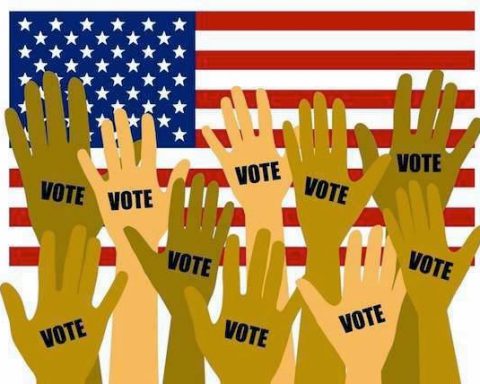[wpcol_1half id=”” class=”” style=””]
RAAH Finds Significant Collaborators
A vitally important partner in the growing collaboration for affordable housing was Food Gatherers of Washtenaw County (affiliated with America’s Second Harvest nonprofit organization). Food Gatherers was the well-established central food resource for food banks and other nonprofit food outlets in the county. They were at a stage in their operation where they needed to expand by building a new warehouse and larger refrigeration facilities. They owned ten acres of land in the north side of the city. Food Gatherers had decided to sell some of their land as a source of capital funds. As a result of an ongoing collaborative relationship, Food Gatherers approached Avalon Housing, Inc. with the idea of selling land to Avalon for the construction of low-income housing. While Food Gatherers needed to receive market value for the land, they were enthusiastic about affirming the importance of better housing for low-income people.[3] These conversations led to an agreement for Avalon Housing, Inc. to buy 3.2 acres of property for $300,000. This was a crucial development because buildable land in Ann Arbor was very scarce and very expensive. This parcel of land was desirable because it was clear land, it was adjacent to a new city park, it was on a planned city bus route, and the price was reasonable in the Ann Arbor market.
In 2001, Avalon Housing began to plan for the construction of a new development of thirty townhome-style apartments of low-income rental housing to be built on the Food Gatherers land. Avalon Housing had substantial experience—it owned and operated 145 units of scatter-site low-rent housing with supportive services in Ann Arbor. Avalon operated from a proactive, pro-resident, supportive service, community-building value commitment. It had an excellent record of cooperation with city government agencies, local banks, social services, and the state housing authority. After nearly a decade of successful operation, Avalon was ready to become the developer of a new affordable rental housing community.
With the option in hand to buy land from Food Gatherers, Avalon Housing invited RAAH to consider funding a major part of the land purchase. The suggestion from Avalon was for RAAH to raise and invest $200,000 toward the cost of the land purchase. It was envisioned that the early commitment by RAAH of $200,000 would help Avalon leverage more substantial grants from other sources, including city and state housing agencies. The Avalon proposal brought an excitement into RAAH and, after due consideration, RAAH decided by vote of its board of directors to make the commitment to Avalon for $200,000. RAAH further decided that it would launch a capital fund campaign for a total of $300,000 so that it could also include money for a new community land trust that was being envisioned. A campaign committee was appointed, and the entire RAAH board of directors made the first pledges.
Early in the RAAH capital fund campaign, a challenge gift of $50,000 was made by city council member Tobi Hanna-Davies and her husband, Douglas Davies. They were in the process of moving, had sold their home, realized a substantial capital gain, and wanted to invest part of the proceeds in affordable housing in Ann Arbor. The family gift took the form of a challenge grant to RAAH to match on a three-to-one basis. The challenge was aimed at helping RAAH secure the first $200,000 for the new rental townhome development as quickly as possible. This challenge gift was a very important encouragement. It stimulated a number of early gifts and pledges from religious congregations and individual donors. It strengthened the determination of RAAH to energetically move ahead with the capital campaign.
In planning the capital fund campaign it became evident to RAAH that since it was a new organization without earned credibility in the wider community it should seek another partner that could be the bona fide fiduciary agent to receive, manage, and disperse the capital funds that RAAH raised for the housing development land purchase. So another important partner, the Ann Arbor Area Community Foundation (AAACF), came into the collaborative effort. AAACF had a twenty-year history of outstanding service in the county region for funding community development projects. Its board of directors and professional staff were well-known and widely respected. Further, their network included many of the significant philanthropic donors in the area.
[/wpcol_1half] [wpcol_1half_end id=”” class=”” style=””]
RAAH applied to the AAACF for formal approval, presented its plan for fundraising for the land purchase, met with the screening committee, and secured AAACF approval. This action gave a significant boost to the credibility of RAAH and to the financial soundness of its capital fund campaign, and helped launch what would become a successful fundraising effort.[4]
A viable collaborative was taking shape, focused on the common goal of creating rental housing affordable for very low-income families and individuals. Four organizations had come together, each bringing different resources and skills:
- Food Gatherers of Washtenaw County brought the crucial asset of buildable land, wide credibility in the county, and an affirmative attitude toward low-income rental housing.
- Avalon Housing, Inc. brought nearly a decade of experience in developing, owning and operating affordable rental housing, skill in securing major funding grants and loans, a set of mature working relationships with local and state government officials, and a plan for a specific rental housing development.
- Religious Action for Affordable Housing brought a coalition of thirty congregations with potential for fundraising and capacity to mobilize public support from within the religious community to help secure city approval.
- The Ann Arbor Area Community Foundation brought wide-ranging connections to regional financial sources and, as the fiscal agent for RAAH, gave credibility to the RAAH capital fund campaign management.
It is important to note that with the exception of RAAH, which was a new organization, the other entities had established records of significant accomplishment. These three entities were nonprofit organizations with paid professional staff and significant numbers of volunteer participants. There were informal lines of mutual communication between the organizations even though there was no formal meeting of representatives. Each of these entities had different goals—fundraising and advocacy, affordable housing ownership and management, fighting hunger through food distribution, and promoting philanthropic investment in county-wide human development. There was, however, sufficient overlap of interest to allow the four organizations to cooperate for the public good. Although there were different levels of commitment, there was a common understanding of the crucial need for increasing the supply of rental housing for families and individuals with low incomes.
Several observations are significant at this point about the evolving process of the collaborative partnership. RAAH had decided that it wanted to focus on housing for very low-income families and individuals. This choice was made with the understanding that other housing entities were much more likely to serve the moderate-income population. The most important such entity was Habitat for Humanity of Huron Valley, which had a well-organized chapter focused on using volunteers to build new homes for ownership by working, moderate- income families. RAAH was counseled by board members from the nonprofit sector that it should be guided by several working principles, including:
- Efficient use of scarce land—building up instead of spreading out;
- Environmental consciousness—promoting open green space;
- Multiple-story, attached townhouse apartment units—not separate houses;
- Units designed for large families—not small efficiency apartments;
- Subsidized, low-rent housing—not privately owned small homes; and
- Rental housing in perpetuity—not housing that could eventually be sold at market value.
These principles became informal criteria for RAAH in evaluating projects and for helping keep it focused on the housing needs of the most underserved sector of the Ann Arbor metro area.[5] Although these principles were never formally adopted, they were important in RAAH board’s thinking, especially in relation to the first project done in collaboration with Avalon Housing.
[/wpcol_1half_end]






Unbound Social